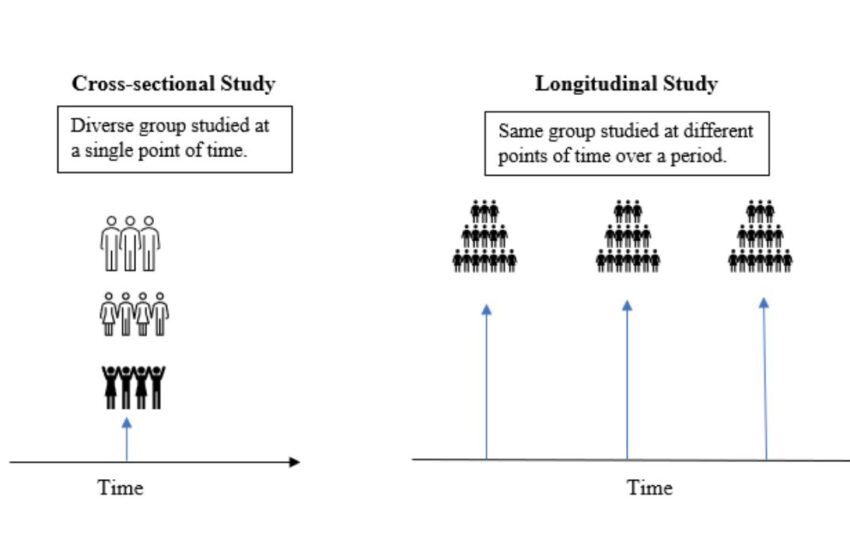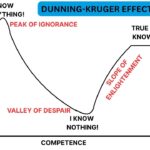Cross-sectional Studies: Overview, Applications, Advantages, and Challenges

As a researcher, you must be familiar with various study designs that support your investigations. In fact, you may have already applied several of them to your research. This article provides an overview of the cross-sectional study design, highlighting its applications with examples, major benefits, and the limitations involved.
What is a Cross-sectional Study?
A cross-sectional research study is a type of observational research design in which data are collected from multiple individuals at a single point in time. This study design is commonly used to assess the prevalence of characteristics, behaviors, diseases, or other variables within a specific group without any intervention or influence.
Cross-sectional Study Examples
Let’s understand more about cross-sectional studies with examples.
1. Cross-sectional study in the context of health and wellness.
Suppose you want to assess the prevalence of obesity among adults in a city and explore its association with lifestyle factors, such as diet and physical activity. Here’s how you would approach it:
- Begin by surveying a randomly selected group of adults through questionnaires or medical check-ups at a single point in time.
- Then, collect data on each participant’s weight, height, dietary habits, exercise frequency, and demographic details.
- Finally, analyze associations between obesity and lifestyle factors, such as whether people who exercise less tend to have a higher body mass index (BMI).
Outcome: The study can identify patterns and correlations, such as “lower physical activity is linked to higher obesity rates.” However, it cannot confirm whether inactivity causes obesity or if obesity leads to reduced physical activity.
2. Cross-sectional study in the context of sports.
Imagine you want to investigate the relationship between training habits and injury prevalence among football players. Your approach can be summarized as follows:
- Survey a group of amateur and professional football players at a single point in time, collecting data on training frequency, intensity, and past injuries.
- Record variables such as age, position played, stretching routines, and history of injuries.
- Analyze associations between training habits and injury occurrence rates—for example, whether players who train more than five times a week are more likely to experience muscle injuries.
Outcome: This study can help identify trends, such as a higher injury rate among players with intense training schedules. However, it cannot determine causation—whether frequent training causes more injuries or if already-injured players report more training sessions due to recovery programs.
In both these examples, you will notice that the study only establishes correlations and does not determine causation. To analyze behavior over time or identify long-term trends, a longitudinal study is required.
Cross-sectional Study vs. Longitudinal Study
While a cross-sectional study examines multiple subjects at a single point in time, a longitudinal study follows the same group of subjects over an extended period of time. In a longitudinal study, data are often collected from smaller groups of individuals who share a common trait.
| Cross-sectional study | Longitudinal study | |
| 1. | Examines a diverse group of subjects at a single point in time. | The same group of subjects is studied over a certain time period. |
| 2. | A large pool is used for data collection. | Generally, data collection occurs from smaller groups of individuals who share a common trait. |
When to Conduct a Cross-sectional Study?
With multiple study designs, you may wonder when a cross-sectional study is the best choice. Here are some pointers:
- Ideal for determining prevalence: Cross-sectional studies can effectively assess the prevalence of behaviors and study associations between multiple exposures and outcomes. For instance, a cross-sectional study would be ideal for analyzing the prevalence of cyberbullying among high school students and its association with social media usage.
- Cost-effective and time-efficient: Since data is collected only once, cross-sectional studies save time and money while setting up a foundation for further research.
- Applicable to both descriptive and analytical studies: For example, if you want to study sports injuries among college athletes, a descriptive study might examine the prevalence of injuries in different sports (e.g., the number of football players experiencing ankle sprains). By contrast, an analytical study would investigate risk factors, such as training intensity, warm-up routines, and playing surfaces, to understand why some athletes are more prone to injuries than others.
Benefits and Limitations of Cross-sectional Studies
Like all study designs, cross-sectional studies have certain advantages and drawbacks.
Advantages
✅Quick and cost-effective: Cross-sectional studies are faster and less expensive than longitudinal studies because data are collected at a single point in time.
✅Useful for measuring prevalence: They help determine how common a condition, behavior, or characteristic is within a specific population. By collecting data from a large subject pool, cross-sectional studies allow for comparisons between groups.
✅No follow-up necessary: Since participants are surveyed only once at a specific time point, there is no risk of dropout, which is a common issue in longitudinal (long-term) studies.
Drawbacks
❌Cannot establish causality: Cross-sectional studies provide a snapshot of both the alleged cause and effect, identifying associations but not confirming cause-and-effect relationships.
❌Susceptible to confounding variables: External factors that influence the results are not often accounted for, which may result in misleading conclusions.
❌Limited to a single time point: These studies do not capture changes over time, rendering them unsuitable for studying trends or long-term effects.
Key Takeaways
Depending on the study objective and research question, a cross-sectional study design can be an effective choice for investigating behavioral patterns. It is particularly useful for conducting an initial analysis before exploring long-term trends in greater depth.







